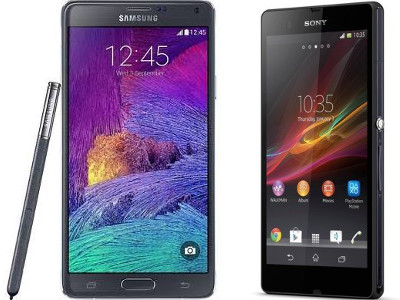One Screen to Rule Them All: Phablets to Take Over Market
 HAMPSHIRE, England – Phablets, an evolutionary step between smartphones and tablet computers, are poised to consume the consumer market by 2019, according to a report from Juniper Research. The firm expects more than 138 million of the devices to ship in 2015 with demand driving delivery of more than 400 million in 2019.
HAMPSHIRE, England – Phablets, an evolutionary step between smartphones and tablet computers, are poised to consume the consumer market by 2019, according to a report from Juniper Research. The firm expects more than 138 million of the devices to ship in 2015 with demand driving delivery of more than 400 million in 2019.
Sales data is not yet available for 2014, but 25.6 million phablets left store shelves in 2012; by the end of 2013, phablets had overtaken desktops and laptops in global sales, according to a Reuters report.
Phablets began their ascent to power in 2011, when Samsung released the first Galaxy Note, now in its fourth generation. Other manufacturers quickly followed: LG, HTC and Sony all released phablets during 2012. Apple joined the ranks this year with the iPhone 6. Though operating systems and other proprietary specifics differ, all the devices share common traits: screen sizes of 5 to 7 inches on the diagonal, sufficient processing power for gaming and multimedia, and clear, reliable voice communication.
According to Juniper, “budget devices will drive phablets into the global mainstream,” but most manufacturers are expected to migrate their flagship smartphones to phablet models “within two or three years.”
“Consumers worldwide are increasingly using smartphones as media consumption and gaming devices, which offer richer experiences through a larger screen,” researcher James Moar noted in the whitepaper Tablets, Phablets & Hybrids: Ecosystem Evolution, Vendor Landscape & Forecasts 2014-2019.
Moar added the rise of phablets may kill the tablet market altogether.
“Consumers with phablets will be less likely to buy smaller-screened tablets, and the price of larger screens may put them off entirely,” he wrote.
How anyone could have overlooked the trend toward combined, portable devices escapes Moar.
“The same chips can now power any mobile device, from smartphones to laptops,” he said. “Hardware capabilities are blurring, with devices like cellular-connected tablets, phablets and smartphones with console-level graphics and sound systems becoming much more common. This shifts device design parameters to budgets and use cases, rather than technological features.”
In fact, Moar opined, phablets most likely will see increased service in the office over the next few years, as device manufacturers include native productivity and business software comparable to or better than what workers use in desktop environments now.
The migration may be good news for the online adult entertainment industry, which mobilized later than much of the mainstream due to the nature of adult content. Larger screen sizes, increased processing power and greater device penetration are expected to broaden the market significantly for segments like live webcams and pay-per-view video.









